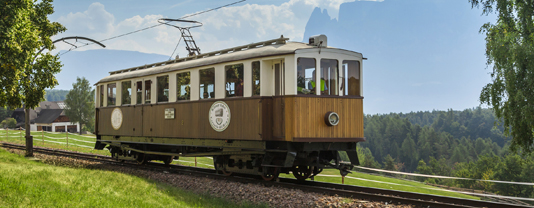When we think of Africa, we envisage savannah, lions and gazelles. But the aim of our tour of Uganda was not to explore one of its ten magnificent natural parks, (which also protect the famous mountain gorillas) but to embark upon an unusual “safari” in quest of news on the future of the railway of this country and its bordering nations. So, notebooks to hand, we recorded an extremely interesting situation. In this region, which includes Uganda, but also Kenya, Rwanda and Burundi, the governments are developing a new supranational railway network with efficient modern standards, which is destined to become an extraordinary instrument for economic development. The “Standard Gauge Railway Project” is scheduled for completion by the end of 2018 and is sustained by a solid financial plan, thanks also to the support of foreign banks and the concreteness of Chinese general contractors. The governments of the states involved have decided to shelve their mistrust and nationalistic attitudes in order to build an infrastructure which will become a real and effective driver for the growth of the local economies: in contrast with the typical scenario in other areas of Africa, in fact, the construction of the railway network is not simply a transport system geared towards serving a mining concession, separate from the economy of the country. On the contrary, it has been designed as an authentic basic infrastructure providing a service for the entire community and offering back-up to all kinds of potential commercial and industrial initiatives that may be developed in the future. Looking several decades ahead. This is also happening, in a completely different context of course, in the north west of Italy, in Piedmont, where Rete Ferroviaria Italiana is building two of the country’s most important investments: the new high-speed/high-capacity line from Turin to Lyon and the new Genoa-Milan line. The two infrastructures are designed for the future and aim to satisfy needs related to the development of railway traffic on those main lines for at least a century to come. But during our tour of the Piedmont railway we discovered how the existing network is not only subjected to constant maintenance but, at the same time, also to technological upgrading in order to increase its capacity and safety.
In this issue, however, we were also keen to sneak a glimpse at the past: our history is important and cannot be abandoned. On the transport front, it is not always easy to reconcile respect for history with the operating efficiency demanded of the modern world. But the Renon railway, a small network in the far north of Italy, has succeeded in this challenge. Beloved of the local populations and built in the stunning surroundings of the Dolomites over a century ago, it came very close to being demolished. But insightful historical preservation works carried out on its buildings and rolling stock, combined with exceptionally conscientious management, has transformed it into a small masterpiece. Despite still using its historical vehicles, it has not been turned into a museum railway and each day its passengers include not only commuters and students but also tourists and train lovers who flock from every corner of Europe to see it. A fitting tribute to history and to the far-sightedness of those who dared to choose non-conventional solutions to reconcile the need to preserve a historical heritage with that of providing an efficient daily public transport service.
Franco Tanel
